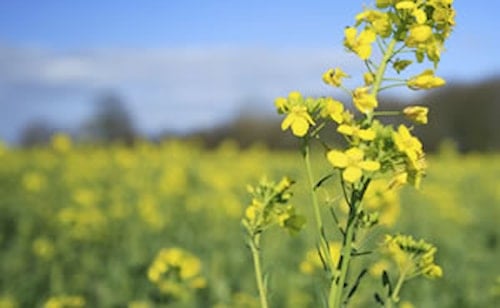Canola
InFARMation Ag Advocacy Project

A member of the mustard family, canola is characterized by its many clusters of bright yellow flowers and very leafy stalks. The flowers produce small seeds, roughly the size of a poppy seed, from which canola oil is extracted. Although relatively well adapted to the Montana climate, canola requires more water than most places in the state receive, and so it is usually irrigated.
Uses
The seeds are crushed to make canola oil. Canola oil is considered a very healthy cooking oil and is the third most popular vegetable oil. The oil is also widely used as a biodiesel and bio-lubricant, as well as in many cosmetic products. Once the oil is extracted, canola meal is used as livestock feed.
Growing Season
Planted April. Harvested September.
Production
106.26 million pounds in Montana.

Scientific Name
Brassica napus; or Brassica campestris
Did You Know?
- Although Montana is the 3rd largest producer of canola in the United States, it represents less than 5% of canola grown in the nation.
- Canola was developed from rapeseed by Canadian scientists using traditional breeding techniques in the 1970s. They were trying to minimize some harmful compounds found in rapeseed.
- The word canola is a combination of Canada and oil.
- Lentils have a high nutritional value, and are one of the oldest known domesticated crops.













